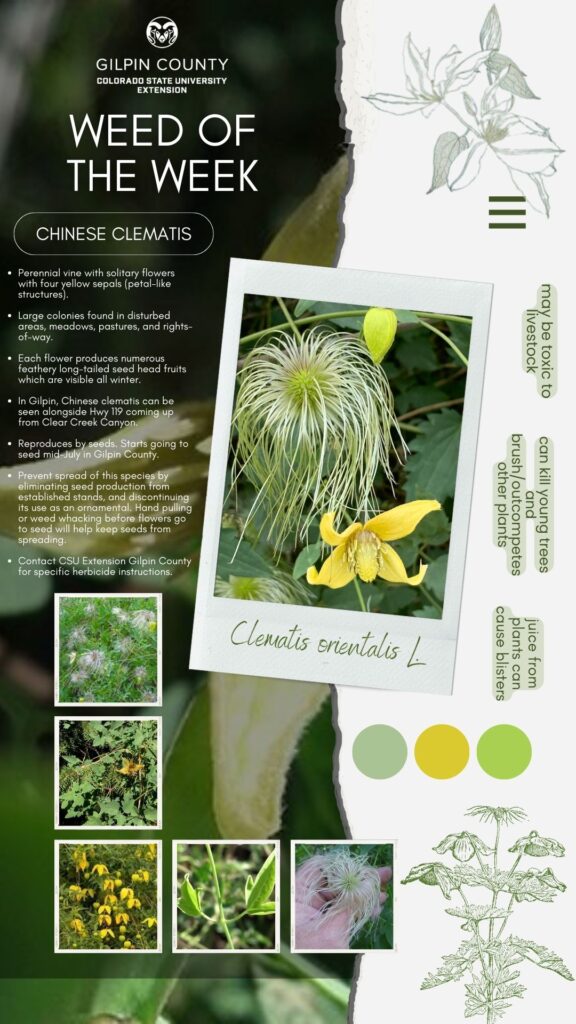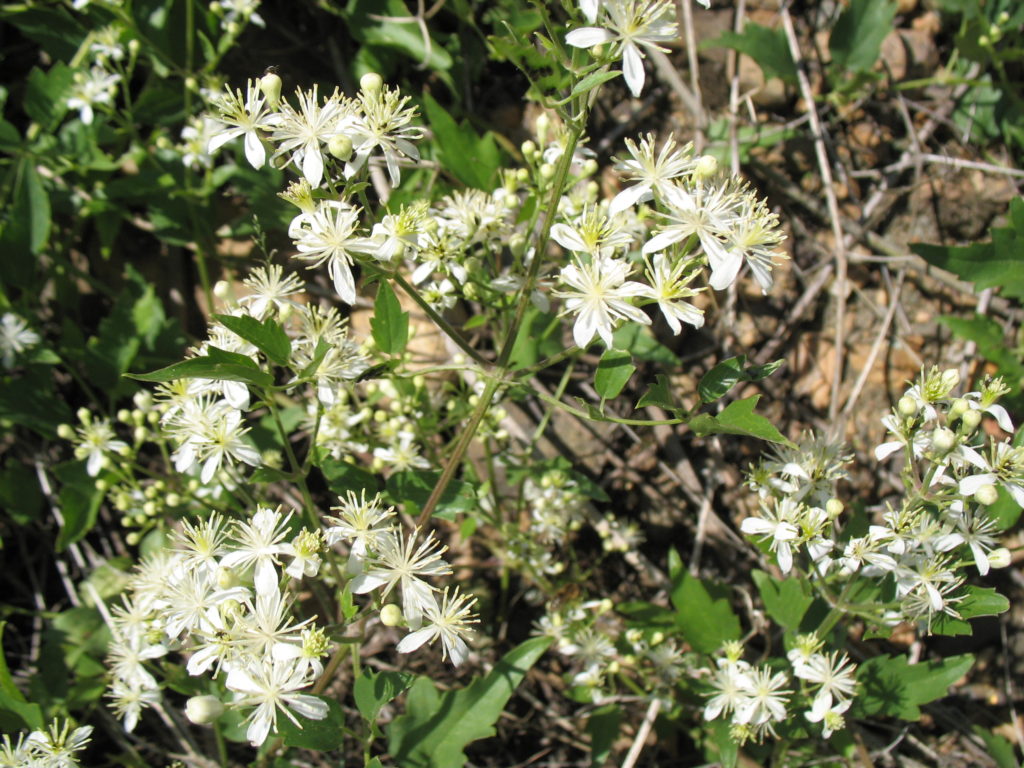
Chinese/Oriental Clematis (Clematis orientalis L.)
Eradication of all live plants is required throughout the entirety of all Colorado counties.
Native look-alike: Western or White Virgin’s Bower Clematis
We do have several native Clematis which are NOT noxious weeds. One of these is a vigorous, sprawling vine which can sometimes be mistaken for Chinese Clematis– particularly when it’s not in flower. Western, or Virgin’s Bower Clematis, Clematis ligusticifolia, has white flowers, not yellow. After they have gone to seed, you can tell them apart by the fact that Chinese clematis has solitary, larger seed heads (golf ball size), and the Native clematis has clusters of 3 seed heads (ping pong ball size) somewhat like the tines of a fork). The native clematis can be valuable for erosion control and other ecosystem functions.

Photo credit: Gary A. Monroe @ USDA-NRCS PLANTS Database
For Further Information:
https://www.colorado.gov/pacific/agconservation/chinese-clematis


